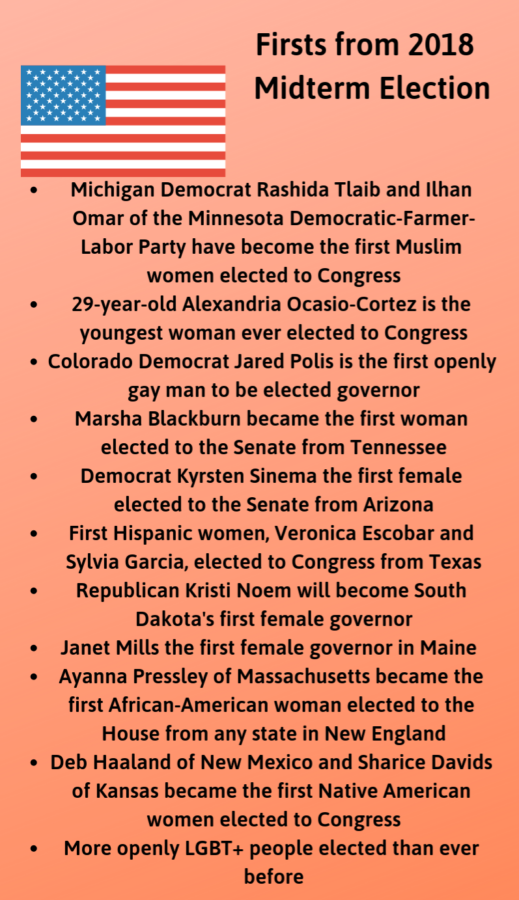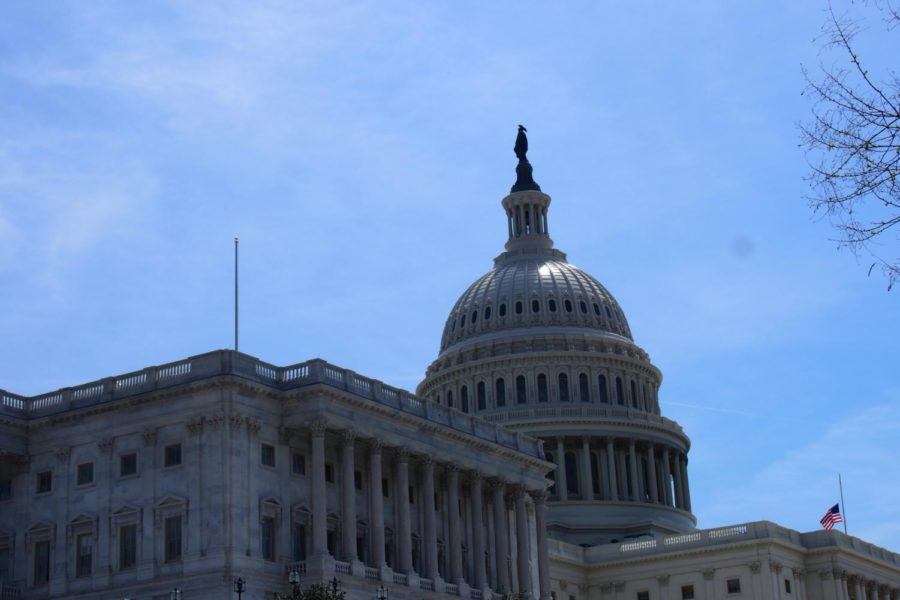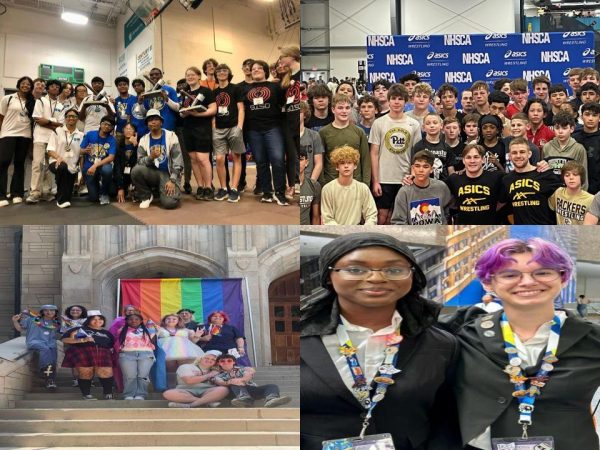Midterm election sets new records
Photo by Anaya Truss-Williams
United States Capitol Building in Washington D.C.
Disclaimer: All statistics in the article are per data available as of Nov. 14. Not all races have officially been called.
The 2018 midterm election was a historical and record-setting one. The Democratic Party won control of the U.S. House of Representatives with 232 seats and the Republican Party maintained control of the Senate with 51 seats through strength in rural and conservative areas. As of Nov. 19 at least four races still need to be called.
The top issues for voters were healthcare, economy/jobs, gun policy and immigration. Democrats have the goal of expanding access to affordable, quality healthcare and better funding public schools. While the Republicans are hoping to focus on creating jobs, lowering the taxes, growing the economy and border security.
In midterms, roughly 40 percent of eligible voters cast a ballot. While in the recent election, about 49.2 percent of people eligible to vote, went to the polls, according to the United States Election Project.
Midterm elections are especially significant because the popular vote determines who is elected. In this election, all 435 seats in the House, a third of the Senate, 36 state governors, three U.S. territorial governors and many city mayors were up for election.
In addition to electing Americans into public office, there were six ballot measures up for voting in North Carolina: Expand Constitutional Rights for Crime Victims, Establish a Constitutional Right to Hunt and Fish, Voter ID Requirement, Income Tax Cap, Create Judicial Vacancy Commission Amendment and Legislative Appointments to Elections Board
Voters rejected the Legislative Appointments to Elections Board Amendment and Judicial Selection for Midterm Vacancies Amendment.
In North Carolina, three Democrats and 10 Republicans were elected to the House. One of the key races in North Carolina was U.S. House District 9 between Republican Mark Harris and Democrat Dan McCready. The District 9 seat has been held by Republicans since 1963. This race got tight when Republican incumbent, Rep. Robert Pittenger lost in the primaries. Harris won the race by 0.6 percent of the vote.
More women advanced past the primaries in this election compared to the last five. 273 women were on the ballot in the 2018 midterms according to Rutger University’s Center for American Women and Politics (CAWP). Before the midterms, 20 percent of Congress were women. 23 percent of the 116th Congress will be women. Though women are gaining more representation in government, there is a lot of progress to be made. Women of color make up just 18 percent of the U.S. population but only seven percent of Congress, per CAWP data. They are still underrepresented but are likely to gain more representation in future elections.
For the next two years, one-party rule in the government is over. The Democrats winning the House will impact the dynamic of the Trump administration. On Jan. 3, 2019, the 116th Congress will begin their terms.

Firsts from 2018 Midterm Elections
Your donation will support the student journalists of East Mecklenburg High School. Your contribution will allow us to purchase equipment and cover our annual website hosting costs.










